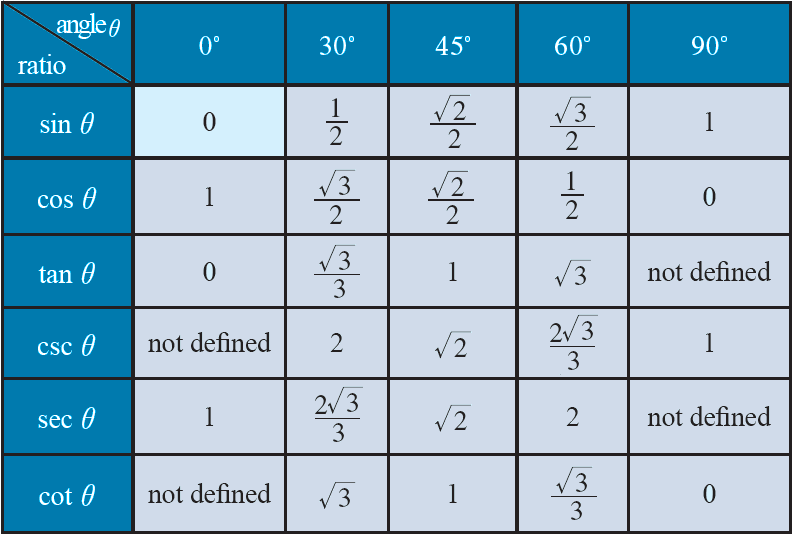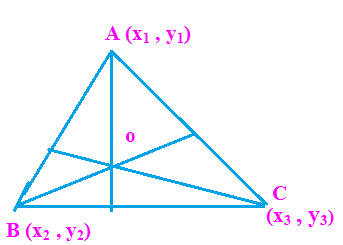MATH FORMULAS
On this page you can find many math formulas in different topics of math.It is more useful to the students in all grades. Once you memorize this kind of formulas you can solve any difficult in an easy way.We have covered all most all the basic topics in math. After memorizing this formula you can try our worksheets and quiz. We have also given shortcuts to memorize these formulas. In each category you can get many formulas and also shortcut ideas.In each category we have example problems.
|
Topics |
Math Formulas |
|
| |
|
Subtraction formula |
|
|
Multiplication formula |
|
|
Division formula |
|
|
Math Formulas |
|
Formula for square |
(a + b)² = a² + 2 ab + b² (a - b)² = a² - 2 ab + b² a² - b² = (a + b) (a - b) a² + b² = (a + b)² - 2ab a² + b² = (a - b)² + 2ab a² + b² = ½ [(a + b)² - (a - b)²] ab = ¼ [(a + b)² - (a - b)²] (a - b)² = (a + b)² - 4 ab (a + b)² = (a - b)² + 4 ab (a+b+c)² =a²+b²+c²+2ab+2bc+2ca (a-b+c)² =a²+b²+c²-2ab-2bc+2ca (a-b-c)² =a²+b²+c²-2ab+2bc-2ca |
|
Formula for cube |
(a + b)³ = a³ + 3 a² b + 3 a b² + b³ (a - b)³ = a³ - 3 a² b + 3 a b² - b³ a³ + b³ = (a + b)³ - 3 ab (a + b) a³ - b³ = (a - b)³ + 3 ab (a - b) a³ + b³ = (a + b) (a² - ab + b²) a³ - b³ = (a - b) (a² + ab + b²) |
|
(x + a) (x + b) = x² + (a + b) x + ab (x + a) (x + b) (x + c) = x³+(a+b+c) x²+(ab+bc+ca) x+abc a² + b² + c² - a b - b c - c a = ½[(a-b)²+(b-c)²+(c-a)²] (a+b+c) (a² + b² + c² - a b-b c-c a) = a³ + b³ + c³ - 3 a b c |
|
Logarithms |
Math Formulas |
|
Product rule |
log ₐ (m n) = log ₐ m + log ₐ n |
|
Quotient rule |
log ₐ (m/n) = log ₐ m - log ₐ n |
|
Power rule |
log ₐ m ⁿ = n log ₐ m |
|
Change of base rule |
log ᵤ m = (logᵥm) x (logᵤv) |
|
Reciprocal rule |
log ₐ i = 1/ logᵢ a log ₐ 1 = 0 log ₐ a = 1 |
|
Math Formulas |
|
Product rule | a m x a n = a (m + n) |
|
Quotient rule | am⁄an = a (m-n) |
|
Power rule | (am)n = amn |
|
Combination Law | (am x bm) = (axb)m |
|
1 ⁄a m = a-m a 0 = 1 |
|
Set theory |
Math Formulas |
|
Associative law |
A ∪ (B∪C)=(A∪B) U C
A ∩ (B∩C)=(A∩B) ∩ C |
|
Distributive law |
A ∪ (B∩C) = (A∪B) ∩ (A∪C)
A ∩ (B∪C) = (A∩B) ∪ (A∩C) |
|
De Morgan's law |
(i)(A∪B)'=A'∩B'.
(ii)(A∩B)'=A'∪B'.
(iii)A-(B∪C)=(A-B)∩(A-C)
(iv)A-(B∩C)=(A-B)∪(A-C) |
|
Cardinal number of power set |
n [p(A)] = 2 ⁿ |
|
Identity laws |
A∪∅=A A∩U=U |
|
Domination laws |
A∪U=U A∩∅=∅ |
|
Idempotent laws |
A∪A=A A∩A=A |
|
Commutative laws |
A∪B=B∪A A∩B=B∩A |
|
Math Formulas |
|
a,(a+d),(a+2d),(a+3d),........... a - first term d = common difference (t₂ - t₁) | |
|
nth term or general term of an A.P | tn = a + (n - 1)d |
|
sn = n⁄2 [2a + (n-1)d] sn = n⁄2 [a + L] L-last term | |
|
number of terms of an A.P | n = (l-a)⁄d + 1 |
|
General form of g.p |
a,ar,ar2,ar3,.................
a - first term r = common ratio (t₂/t₁) |
|
Sum of n terms of g.p |
if r≠1
sn = a( 1- rn)⁄( 1 - r) sn = a( rn - 1 )⁄( r - 1) if r = 1 sn = n a Sum of infinite series sn = a ⁄( 1 - r) |
|
Trigonometry |
Math Formulas |
|
Trigonometric ratios |
sin θ = Opposite side/Hypotenuse side cos θ = Adjacent side/Hypotenuse side tan θ = Opposite side/Adjacent side Cosec θ = Hypotenuse side/Opposite side Sec θ = Hypotenuse side/Adjacent side cot θ = Adjacent side /Opposite side |
|
Reciprocal |
sin θ = 1/Cosec θ Cosec θ = 1/sin θ Cos θ = 1/sec θ sec θ = 1/cos θ tan θ = 1/cot θ cot θ = 1/tan θ |
|
identities |
sin² θ + cos² θ = 1 sin² θ = 1 - cos² θ cos² θ = 1 - sin² θ Sec² θ - tan² θ = 1 Sec² θ = 1 + tan² θ tan² θ = Sec² θ - 1 Cosec² θ - cot² θ = 1 Cosec² θ = 1 + cot² θ cot² θ = Cosec² θ - 1 |
|
Complementary angles |
Sin (90 - θ) = cos θ Cos (90 - θ) = sin θ Tan (90 - θ) = cot θ Cot (90 - θ) = tan θ Cosec (90 - θ) = sec θ Sec (90 - θ) = cosec θ |
|
Values of certain angles |
 |
|
Sin 2A = 2 Sin A cos A Cos 2A = cos² A - Sin² A tan 2A = 2 tan A/(1-tan² A) Cos 2A = 1 - 2Sin² A Cos 2A = 2Cos² A - 1 sin 2A = 2 tan A/(1+tan² A) cos 2A = (1-tan² A)/(1+tan² A) sin²A = (1-Cos 2A)/2 Cos²A = (1+Cos 2A)/2 | |
|
Half angle formula |
Sin A = 2 Sin (A/2) cos (A/2) Cos A = cos² (A/2) - Sin² (A/2) tan A = 2 tan (A/2)/[1-tan² (A/2)] Cos A = 1 - 2Sin² (A/2) Cos A = 2Cos² (A/2) - 1 sin A = 2 tan (A/2)/[1+tan² (A/2)] cos A = [1-tan²(A/2)]/[1+tan² (A/2)] sin²A/2 = (1-Cos A)/2 Cos²A/2 = (1+Cos A)/2 tan²(A/2) = (1-Cos A)/(1+Cos A) |
|
Sin (A+B) = Sin A Cos B + Cos A Sin B Sin (A-B) = Sin A Cos B - Cos A Sin B Cos (A+B) = Cos A Cos B - Sin A Sin B Cos (A-B) = Cos A Cos B + Sin A Sin B tan (A+B) = [Tan A + Tan B] /(1- Tan A Tan B) tan (A-B) = [Tan A - Tan B] /(1+ Tan A Tan B) | |
|
Compound angles sum and differences |
sin(A+B)+Sin (A-B) = 2 Sin A cos B sin(A+B)-Sin (A-B) = 2 Cos A sin B cos(A+B)+Cos (A-B) = 2 Cos A cos B cos(A+B)-Cos (A-B) = -2sin A sin B |
|
Sin 3A = 3 Sin A - 4 sin³A Cos 3A = 4 Cos³A - 3 Cos A tan 3A=(3 tan A - tan³A)/(1-3tan²A) | |
|
Sum to product formula |
sin C + sin D = 2 sin [(C+D)/2] cos [(C-D)/2] sin C - sin D = 2 cos [(C+D)/2] sin [(C-D)/2] cos C + cos D = 2 cos [(C+D)/2] cos [(C-D)/2] cos C - cos D = -2 sin [(C+D)/2] sin [(C-D)/2] |
|
Analytical geometry |
Math Formulas |
 | |
 | |
|
Area of triangle using |
 |
 | |
|
Centroid |
 (x₁+x₂+x₃)/3, (y₁+y₂+y₃)/3 |
|
Midpoint of the line segment |
 (x₁ + x₂)/2 , (y₁ + y₂)/2 |
 √(x₂ - x₁) ² + (y₂ - y₁) ² | |
|
Slope of the line |
m = tan θ m = (y2 - y1)/(x2 - x1) m = - coefficient of x / coefficient of y y = m x + b m-slope |
|
Slope intercept form: y = m x + b Here m = slope and b = y-intercept | |
|
Two point form: (y-y₁)/(y₂-y₁) = (x-x₁)/(x₂-x₁) | |
|
Point- Slope form: (y-y1) = m (x-x1) | |
|
Intercept form: (X/a) + (Y/b) = 1 | |
|
d=| (ax₁+by₁+c)/ va²+b²| | |
|
θ = tan-¹ |(m₁ - m₂)/(1 + m₁ m₂)| | |
|
(x-h)² + (y-k)² = r² | |
|
(x-x₁) (x-x₂) + (y-y₁) (y-y₂) = 0 | |
|
General equation of circle |
x² + y² + 2gx + 2fy + c = 0 |
|
Length of the tangent |
√ (x₁² + y₁² + 2gx₁ +2fy₁+c) |
|
Condition of two circles touching externally |
c₁c₂ = r₁ + r₂ |
|
Condition of two circles touching internally |
C₁ C₂ = r₁ - r₂ |
|
Orthogonal circles |
2 g₁g₂+2f₁f₂=c₁+c₂ |
|
Differentiation |
Math Formulas |
|
d(xⁿ) = n xⁿ⁻¹ d(sin x) = cos x d(cos x) - sin x d(logₐ x) = 1/x log ₐ e d(logₑ x) = 1/x d(tan x) = sec² x d(sec x)= sec x tan x d(cot x)= - cosec²x d(cosec x)= - cosec x cot x d(Sin -¹ x)= 1/√(1-x²) d(Cos -¹ x) = -1/√(1-x²) d(tan -¹ x)= 1/(1+x²) d(Cot -¹ x)= -1/(1+x²) d(Sec -¹ x)= 1/[x√(x² - 1)] d(cosec -¹ x)= -1/[x√(x² - 1)] | |
|
Product rule
|
(UV)' = UV' + VU' |
|
Quotient rule |
(U/V)' = [VU' - UV'] /V² |
|
Lagrange theorem |
1.f(x) is defined and continuous on the closed interval [a,b] 2.f(x) is differentiable on the open interval (a,b). Then there exists at least one point c ∊ (a,b) such that f ' (c) = f (b) - f (a) / (b - a) |
|
Rolle's theorem |
1.f(x) is defined and continuous on the closed interval [a,b]
3.f(A) = f(b)
|
|
Maclaurin series |
f(x) = f(0) + (f'(0) ⁄1!)x + (f''(0) ⁄2!)x2 + (f'''(0) ⁄3!)x3 + .......... |
math formulas math formulas math formulas math formulas math formulas math formulas math formulas math formulas math formulas
|
Math Formulas |
|
∫ xⁿ dx = x⁽ⁿ ⁺ ¹⁾/(n + 1) + c ∫ (1/xⁿ) dx = -1/(n - 1) x⁽ⁿ⁻¹⁾ + c ∫ (1/x) dx = log x + c ∫ e^(x) dx = e^x + c ∫ a^(x) dx = a^x/(log a) + c ∫ Sin x dx = - Cos x + c ∫ Cos x dx = Sin x + c ∫ Cosec ² x dx = - Cot x + c ∫ Sec ² x dx = tan x + c ∫ sec x tan x dx = sec x + c ∫ Cosec x cot x dx = - Cosec x + c ∫ 1/(1 + x ²) dx = tan ⁻ ¹x + c ∫ 1/ √(1 - x ²) dx = Sin ⁻ ¹x + c ∫ (ax + b)ⁿ dx = (1/a) (ax + b)⁽ⁿ ⁺ ¹⁾/(n + 1) + c ∫ 1/(ax + b) dx = (1/a) log (ax + b) + c ∫ e^(ax + b) dx = (1/a) e^ (ax + b) + c ∫ Sin (ax + b) dx = -(1/a) Cos (ax + b) + c ∫ Cos (ax + b) dx = (1/a) Sin (ax + b) + c ∫ Sec ² (ax + b) dx = (1/a) tan (ax + b) + c ∫ Cosec ² (ax + b) dx = -(1/a) cot (ax + b) + c ∫ Cosec (ax+b)cot (ax+b)dx=-(1/a)Cosec (ax+b) + c ∫ sec (ax + b) tan (ax + b) dx = sec (ax + b) + c ∫ 1/1+ (ax) ² dx = (1/a) tan ⁻ ¹ (ax) + c ∫ 1/ √[1 - (ax ²)] dx = (1/a) Sin ⁻ ¹(ax) + c | |
|
Integrating by parts |
∫ u dv = uv - ∫ v du |
|
Mensuration |
Formulas |
|
Area of circle = Π r ² Circumference of circle = 2 Π r | |
|
Area of triangle |
Area of Equilateral-triangle = (√3/4) a² Perimeter of Equilateral-triangle = 3a |
|
Area of scalene triangle = √s(s-a)(s-b)(s-c) Perimeter of scalene triangle = a + b + c | |
|
Area of Semi circle= (1/2) Π r² Perimeter of semi-circle = Πr | |
|
Area of quadrant |
Area of quadrant = (1/4) Π r² |
|
Area of rectangle |
Area of rectangle = L x W Perimeter of rectangle=2(l+w) |
|
Area of square = a² Perimeter of square = 4a | |
|
Area of parallelogram = b x h | |
|
Area of quadrilateral =(1/2) x d x (h₁+h₂) | |
|
Area of rhombus =(1/2) x (d₁ x d₂) | |
|
Area of trapezoid =(1/2) (a + b) x h | |
|
Area of sector |
Area of the sector = (θ/360) x Π r ² square units (or) Area of the sector = (1/2) x l r square units Length of arc = (θ/360) x 2Πr |
|
Curved surface area = 2 Π r h Total Curved surface area = 2 Π r (h+r) Volume = Π r²h | |
|
Curved surface area = Π r l Total Curved surface area = Π r (L+r) Volume = (1/3)Π r²h L² = r² + h² | |
|
Curved surface area = 4Π r² Volume = (4/3)Π r³ | |
|
Curved surface area = 2Π r² Total Curved surface area=3Π r² Volume = (2/3)Π r³ | |
|
Cuboid |
Curved surface area=4h(l+b) Total surface area = 2(lb+bh+h l) Volume = l x b x h |
|
Cube |
Curved surface area=4a² Total surface area = 6a² Volume = a³ |
Recent Articles
-
Trigonometry Cofunction Identities
Apr 30, 24 09:01 PM
Trigonometry Cofunction Identities -
Worksheet on Unit Rates
Apr 30, 24 08:50 PM
Worksheet on Unit Rates -
Ratio Worksheet
Apr 29, 24 07:59 PM
Ratio Worksheet

